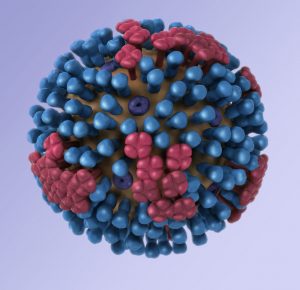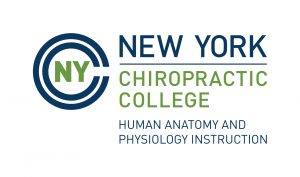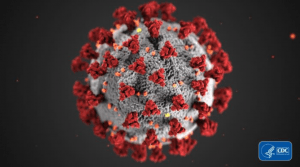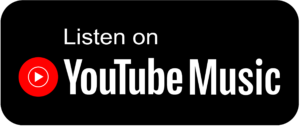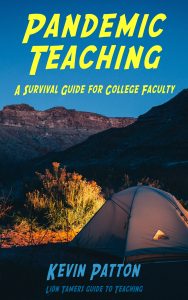Mid-Winter Winterizing of Our Courses
Special Bonus Episode 63b
Bonus Episode
Episode | Quick Take
Host Kevin Patton alerts us to the potential impact of influenza and other outbreaks on our courses and provides advice and options for preparation, handling impacts, and more! In the absence of outbreaks, these tips also help cope with normal winter absences resulting from illnesses.
00:42 | Why Winterize in Mid Winter?
04:16 | Sponsored by AAA
04:33 | Learning from Past Epidemics and Pandemics
08:49 | Sponsored by HAPI
09:11 | Staying Home. I Mean It!
16:04 | Sponsored by HAPS
21:49 | Survey Says…
22:19 | Final Thoughts
26:56 | Staying Connected
Episode | Listen Now
Episode | Show Notes
Just think: your family are the people most likely to give you the flu. (Jane Wagner)
Why Winterize in Mid Winter?
3.5 minutes
We are now in a flu (influenza) season and on the verge of a coronavirus pandemic. Maybe we should have talked about this earlier, eh? But better late than never!
- CDC expects ‘community spread’ of coronavirus, as top official warns disruptions could be ‘severe’ (news summary) my-ap.us/2TjciVO
- World is approaching coronavirus tipping point, say experts (news summary) my-ap.us/2vel7bp
- Image: influenza structure my-ap.us/2Vlk58u
Sponsored by AAA
0.5 minutes
- A searchable transcript for this episode, as well as the captioned audiogram of this episode, are sponsored by the American Association for Anatomy (AAA) at anatomy.org.
- Searchable transcript
- Captioned audiogram
- Don’t forget—HAPS members get a deep discount on AAA membership!
Learning From Past Epidemics and Pandemics
4 minutes
Back in the tragic flu pandemic of 1918, St. Louis had a much lower impact than other major U.S. cities. The key was implementation of “social distancing,” which we can implement in our personal lives—and in our courses.
- Quarantine during 1918 flu epidemic saves lives (retrospective on how closing things down helped stem an epidemic in St. Louis) my-ap.us/38VFJUJ
- Information About Social Distancing (fact sheet) my-ap.us/2TaEla1
- Influenza—Flu (CDC information hub regarding influenza) my-ap.us/3a5W8WN
- Image: Flu in St. Louis 1918 my-ap.us/3c4mABR
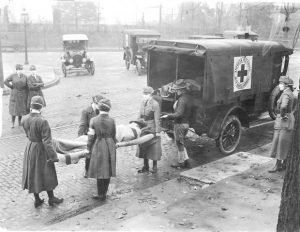
Sponsored by HAPI Online Graduate Program
0.5 minute
The Master of Science in Human Anatomy & Physiology Instruction—the MS-HAPI—is a graduate program for A&P teachers. A combination of science courses (enough to qualify you to teach at the college level) and courses in contemporary instructional practice, this program helps you power up your teaching. Kevin Patton is a faculty member in this program. Check it out!
Staying Home. I Mean It!
7 minutes
Yeah, we want to come to school. We want our students to be regular participants in class. But, you know, sometimes the public good takes precedent over what we think is “right” or honorable.
- EVEN MORE Tricks for Retention & Success in Online Courses | Episode 23 (where I discuss keeping a close eye on student progress and participation)
- Bissinger’s 75% dark chocolate (a St. Louis favorite; Kevin’s favorite; your new favorite?) amzn.to/2uuoL0y
- Give Your Course a Half Flip With a Full Twist | Episode 6 (where I talk about that green pen)
Sponsored by HAPS
0.5 minutes
The Human Anatomy & Physiology Society (HAPS) is a sponsor of this podcast. You can help appreciate their support by clicking the link below and checking out the many resources and benefits found there. Don’t forget the HAPS Awards, which provide assistance for participating in the HAPS Annual Conference.
- Anatomy & Physiology Society
- It’s coming soon!
- Kevin’s Unofficial Guide to the HAPS Annual Conference | 2019 Edition | Episode 42
- Now is a good time to submit your questions, comments, tips, & stories for the upcoming 2020 edition!
The Preparation Phase
5.5 minutes
Preparation is a great strategy to minimize harm, right?
Don’t forget to call in with your ideas on stealth teaching (for an upcoming episode).
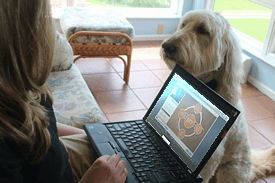
Survey Says…
0.5 minute
- Please take about 5 minutes to answer some questions—it will really help improve this podcast!
- Yes; I’ll give you extra credit if you fill out a survey!
- theAPprofessor.org/survey
Final Thoughts
4.5 minutes
- Nuzzel link: Updates ( almost-daily headlines of interest to A&P teachers, curated by Kevin Patton)
- Influenza—Flu (CDC information hub regarding influenza) my-ap.us/3a5W8WN
- Coronavirus Disease 2019—COVID-19 (CDC information hub) my-ap.us/2VuLG7h
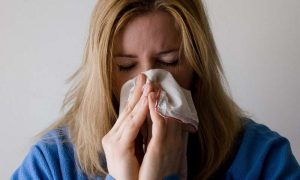
Apology!
Long after recording this episode, I realized that the term “Spanish flu” that I used is a derogatory term. My intent was not to cause harm and I apologize to everyone hurt by my use of the term. Listen to the audio version of this apology in Episode 72.
Need help accessing resources locked behind a paywall?
Check out this advice from Episode 32 to get what you need!
Episode | Captioned Audiogram
Episode | Transcript
The A&P Professor podcast (TAPP radio) episodes are made for listening, not reading. This transcript is provided for your convenience, but hey, it’s just not possible to capture the emphasis and dramatic delivery of the audio version. Or the cool theme music. Or laughs and snorts. And because it’s generated by a combo of machine and human transcription, it may not be exactly right. So I strongly recommend listening by clicking the audio player provided.
 This searchable transcript is supported by the
This searchable transcript is supported by the
American Association for Anatomy.
I'm a member—maybe you should be one, too!
Kevin Patton:
Author and humorist Jane Wagner once wrote, “Just think, your family are the people most likely to give you the flu.”
Aileen:
Welcome to The A&P Professor, a few minutes to focus on teaching human anatomy and physiology with a veteran educator and teaching mentor, your host, Kevin Patton.
Kevin Patton:
This is a special bonus episode about preparing your course for flu or other outbreaks.
Kevin Patton:
Yeah, okay, this episode may not be timed as well as it could’ve been. It’s all about winterizing our courses, and here we are a few days past the midpoint of winter. By the way, for those of you in climates without much of a winter, winterizing is a term that we use for taking precautions for potential damage from things like below freezing temperatures, heavy snow, ice, and other wintery phenomena.
Kevin Patton:
One of the things about winter is that it also roughly corresponds with flu season, that is more folks get the flu during the winter than other times of the year by far. So what I mean by winterizing here is mostly centered on what I’ve learned about managing things in my course to minimize potential effects from flu season. So, yeah, we’re already in flu season. So, yeah, I should’ve produced this episode months ago while we still had time to prepare. But then the COVID-19 thing happened, which has kind of upstaged the flu season because of the nature of the press coverage, which has been pretty typical for such events and because it’s, well, new.
Kevin Patton:
Even though as I record this the flu is a much more immediate and substantial threat here in Missouri where I live, and probably also where you live, COVID-19 is higher up in most people’s minds right now. Now, as you probably know, an epidemic is a widespread regional outbreak of a disease and a pandemic is when an epidemic reaches global proportions, and it’s looking like COVID-19 will likely be recognized as a pandemic any minute now if it hasn’t already by the time you’re listening to this.
Kevin Patton:
Early on, the press and some governments really soft pedaled this idea to avoid panicking the public. But of course, the flip side of that is that that kind of approach stops many folks from getting prepared. Those that do prepare often make things worse because they’re not preparing properly and effectively. They’re buying up cases of face masks when there are many other and far better ways of getting ready for a possible pandemic. On the other hand, there’s a chance COVID-19 will slow or even stop and we won’t have a huge pandemic. Not much of a chance, but a chance. But even if it does, we’ve still got that flu thing going, and these days also outbreaks of other viruses, like measles, and mumps, and, well, the list goes on depending on where you live.
Kevin Patton:
Okay, so this is a special bonus episode, meaning I’m trying to fit it in between the episodes that I’ve already been working on because, well, it’s just better timing if I do it now rather than later, sort of winterizing tips in mid-winter. That’s better than after winter, right? Well, kind of better. There’s no preview episode, no word dissections, no nothing but just diving right into it.
Kevin Patton:
A searchable transcript and a captioned audiogram of this episode are funded by AAA, the American Association for Anatomy. Visit them at the newly redesigned website at anatomy.org.
Kevin Patton:
Epidemics and pandemics have had their effects on my family, and maybe on yours as well. These stories … No, no, no, no. I’m not going to tell those stories right now. Someday, but not now. I was just going to say that these stories involve the things that we see happening now, involuntary quarantines of family members, near-death illness, and, well, sadly, even death itself. One of the epidemics that affected the Patton family, in particular my dad’s dad, was the Spanish flu outbreak of 1918. Apparently, he got that strain of flu at an army base during basic training, and it produced heart damage that eventually killed him while he was still a young man.
Kevin Patton:
Now, back home in St. Louis and surrounding towns where the rest of the Pattons lived, things were much better. St Louis, it turns out, fared way, way better than most major cities during that pandemic because we did something strange here. The churches, the schools, colleges, and major businesses all agreed, sometimes reluctantly, but they all agreed to shut down or reduce activity for a time. Really. While all the other cities were getting pushback from these institutions, in St. Louis, we just happened to have a public health director and a mayor that could get them all to agree to a strategy called social distancing. Yeah, that’ll never happen again, anywhere probably. But the thing is it worked. We broke the cycle and had far less impact from Spanish flu than other cities. Far less. The lesson though is clear. Staying away from direct contact with other people is the best way to avoid some pandemic diseases. We can implement social distance from the individual and family end of things, though, right? And if carried out across a whole community, even to a moderate level, it can impact the cycle of disease spread.
Kevin Patton:
I bring all this up because I practice this method myself. Even in my A&P course, at least I try to. First, if I have the flu or suspect that I’ve come down with some other highly contagious disease, maybe even a pandemic disease, I stay home. Well, okay, I try to stay away from school. Sometimes my inner voice convinces me to head to campus anyway. But I always end up feeling bad about that because I could’ve easily spread my infection around to folks who otherwise may have avoided it, and they may be way more vulnerable to the kinds of really bad side effects than I am. But I do try to stay away. I try to implement social distancing.
Kevin Patton:
Second, I really try hard, really, really hard, to convince my students not to come to class when they’re sick. I tell them that the K-12 schools and even our campus preschool don’t let students with a fever attend until they’ve been fever free for at least 24 hours. So let’s us practice that, too. Why not? For some infections, we may be at least as vulnerable as those kids.
Kevin Patton:
I know what you’re thinking. How am I going to hold my students to the rigorous standards that most A&P courses have? How do I balance my must-attend policy with this stay-home-if-you-think-you-might-have-the-flu admonition? You know what? I’m glad you asked that. So get a hot drink to sip, have a seat in a comfy chair, and pull a blanket over your shoulders as I tell you all about that.
Kevin Patton:
The free distribution of this podcast is sponsored by the Master of Science in Human Anatomy and Physiology Instruction, the HAPI degree. Check out this online program at nycc.edu/hapi, that’s H-A-P-I, or click the link in the show notes or episode page.
Kevin Patton:
Yep, I do tell my students to stay home when they think that they have the flu or anything else that we could easily catch from them. But how does that work when we have learning goals to meet? This is A&P after all, you know, the course that demands more of students than any other course in the universe. Well, I just tell them that I’ll work with them if they’re sick. No, not at the side of their sick bed, not physically. But if they let me know what’s going on, I’ll go ahead and work with them. First, I’ll tell them to get their rest and get well and don’t think about A&P. You know what? If they’re feverish, they’re probably going to be having fear dreams about A&P anyway. But I tell them, “Don’t fret about missing anything until after recovery.” Then I tell them I’ll work with them to get them back into the swing of things, and then I do work with them.
Kevin Patton:
But what about attendance? And what if it’s an exam that they miss? Well, you know what? All those things can be worked out individually later, even if you have very large classes. I won’t let missing too many days or not taking the exam on the scheduled day be what keeps them from succeeding.
Kevin Patton:
You might ask, “Don’t students take advantage?” Well, yeah. Sometimes, I guess. But because the students who will take advantage don’t really come to me for help after recovery, and unfortunately they don’t often end up succeeding or even staying in my course, so, no, this policy isn’t that big a problem. And you may remember from things I’ve said in the past I kind of tend to check in on students I don’t hear from, and that lets them know that I’m keeping tabs on them. Besides showing them that I do care about them, it also shows them that I’m not going to let them slide by either.
Kevin Patton:
You might ask, “Don’t some students come to class when they’re sick anyway?” Well, yeah, sure they do. Just like in real life. But I think my policy and my actions do keep more home than would stay home otherwise. So yeah, it helps. Doesn’t solve everything, but I think it helps a bit.
Kevin Patton:
I think it’s important to realize that students do come to school sick. They may be just getting their symptoms and don’t even realize that they’re sick. And maybe they don’t realize that they’re contagious. So knowing that, it’s going to motivate me to take other measures. For example, I remind them of transmission by hand and that every surface in the classroom is likely to have flu viruses during an outbreak. So I tell them, “Don’t touch your face. Don’t eat or drink in the classroom,” which they’re not really supposed to do anyway, “Not even those chocolates I know you’re sneaking out of your pockets during class, the ones you don’t see fit to share with me, which is okay because I don’t want to get the flu either. So go ahead. Keep your chocolates. I don’t want … ” Okay. Sorry. Got kind of off on a tangent there. I also tell them to go wash their hands after class. Wash them well, not just a quick squirt of soap and then a quick rinse. Then I tell them, “Use a paper towel, your foot, or something to open the doors you leave the washer.”
Kevin Patton:
Now, here’s something else I do, and I do this year-round whether it’s flu season or not. When I’m handling student papers, like when I’m grading or recording student exams, grading assignments or whatever, I don’t eat or drink myself. Sure, the grading would go easier with a cup of tea, Earl Gray, hot, maybe some chocolate too. But nope. Because I know those papers have all kinds of runny snotty that has dripped onto them, I don’t do that. I know that they were filled out and handed in with unwashed hands, at least some of them were, that they were sneezed on, dropped on the high traffic floor, and who knows what else.
Kevin Patton:
Another thing I watch out for is eating or drinking while using a shared computer keyboard or even my personal computer. Like when I type on it right after handling student papers, that is going to contaminate my keyboard. So I need to assume it’s always contaminated.
Kevin Patton:
Now, this care about reducing infection risk was ingrained into me in my first career, that is when I was a zookeeper. You work with a lot of species. Never did work with a pangolin, though. And you clean a lot of stalls, and other animal enclosures, and you learn that your skin and clothes are contaminated all day and you learn not to touch your face or put things in your mouth until after a thorough cleaning of your hands. So when I’m on campus and when I’m handling student work, I just do what I’d hope nurses and other health professionals do at their clinical jobs, what I did as a zookeeper, treat everything as potentially contaminated. Because really, that’s the reality of it.
Kevin Patton:
A few other things I do that flow out of this perspective include pressing elevator buttons and the buttons on the multimedia console in the classroom with my knuckles, not my fingertips. Another thing I do is I use my own pen, a green pen of course, the one I always carry with me and which I never put in my mouth. I use my own pen to sign things, not the potentially snotty pen someone hands me along with the form they want me to sign. It’s also a good way to know that it’s my signature. Because if it’s not green, it’s not mine.
Kevin Patton:
Of course, this sort of thing can get out of hand. After all, we have to live life, and the life we live is filled with all kinds of microorganisms, most of whom are our friends, or at least not our enemies. But during flu season, or during a pandemic outbreak, or when cleaning wild animal enclosures all day, I think such precautions may be worth the effort.
Kevin Patton:
Marketing support for this podcast is provided by HAPS, the Human Anatomy and Physiology Society, promoting excellence in the teaching of human anatomy and physiology for over 30 years. Go visit HAPS at theAPprofessor.org/haps. That’s H-A-P-S.
Kevin Patton:
Up until now, I’ve been talking about what to do in the middle of flu season, or COVID-19 season, or measles outbreak. Okay, if there’s a measles outbreak in your classroom, there’s not much you can do except burn it down, which I don’t recommend. But I want to switch gears to the all-important prep work. If I know there’s a chance I’ll be out of the classroom for a week or two at some future point, wouldn’t it make sense to prepare for that ahead of time? Well, it makes sense to me, so that’s what I do.
Kevin Patton:
In the olden days, I always had three videotapes. Now, each of these videos explained some core principle, or amazing application of core principles of anatomy and physiology, or maybe an experiment that was done on video. These were concepts embedded in our course, but the videos themselves were not on the syllabus. Each video had a stack of handouts with questions that I had developed to help students focus on the content by answering them as the video unfolded. And then there were reflection questions, or case studies, or similar activities to be completed in small groups after the video ended. So a sub, even someone not really well versed in anatomy and physiology, could walk into my class, distribute the handouts, and pop the video cassette into the player. My students would get a quality learning experience relevant to the course without me having to be there. Of course, if I knew I’d be absent ahead of time, I could tailor it more precisely to where we were in the course. But I always had at least three anytime packages set up and in my office ready to be picked up if I had to call in sick.
Kevin Patton:
As time and technology advanced, so did this strategy. I could now have online presentations, interactive learning activities that were online, retrieval practices, all kinds of things ready to be switched on in my learning management system if the need arose. And as time and tech advanced even further, and as I realized that I was flipping my course more and more, though back then we didn’t call it flipping, I realized I didn’t really have to be there all the time anyway. Probably somebody should be there to help guide them, but not necessarily me. And whoever was there didn’t really have to prepare anything or know anything in particular in order to sub for me.
Kevin Patton:
And besides, at some point in any illness, I probably could have some availability remotely. If not, well, then things would be much more serious than me worrying about how my classes are being covered. And happily, it’s never come to that. So what I’m saying here is be prepared to be absent for at least a week, maybe two or three. Do the work ahead of time so your students can stay on their journey without your presence. I also prepare for what I’ll do if and when I get student absences.
Kevin Patton:
Your class doesn’t work exactly the same as mine. We all have our own ways of doing things, right? But in my class, I know what I’ll do if I have a student who’s succeeding, stumbles a bit because of an absence due to illness, and then eventually it gets back into the swing of things. I’ll make a note of it in their record, and there’s a column in my learning management systems grade book where I can do that. And if their absence causes an impact on their grade, I can evaluate their case individually. I’ve made a note of it so I know that I’m going to do that. These are the times I might consider looking at what they’ve done and where they ended up more than at their total number of grade points.
Kevin Patton:
Another kind of thing to prepare for, which we can do in much the same ways as I’ve already described, is what happens during a forced stoppage of our courses. What if our government, or our college, or our department shuts down classes because of a disease outbreak or potential outbreak? Know what you’ll do? Now’s the time, and probably a bit past time, to think about that.
Kevin Patton:
And related to that is the question of what the existing policy on such a thing is or whether there even is an existing policy at your institution. At my college during the H1N1 flu situation a few years ago, we developed a policy that specified suggested strategies for faculty if such a closure were to occur. I’m not sure if it’s still in the books. But right now, I’m only teaching online courses there so my risk of impact is pretty low right now.
Kevin Patton:
Hey, you probably forgot about that survey that I’ve been taking that’s part of my end of season debriefing. I’m asking you now to please take just a few minutes of your time to respond to that anonymous survey because it’s your experience as an individual listener that’s important to me. Just go to theAPprofessor.org/survey. And as always, thanks for your support.
Kevin Patton:
To wrap things up, I have a few final thoughts. First one is public health is an important and I think fascinating discipline that involves the applications of the principles that we teach in anatomy and physiology. When it’s flu season, or whatever season, or outbreak, or potential outbreak, it’s a great opportunity to advise our students about public health safety while at the same time giving them some good lessons in applying A&P principles. I call this stealth teaching. No, I don’t. But now that the term has come out of my mouth, I think I’m going to start using it. Stealth teaching. I kind of like that. Okay, that’s going to be a topic for a future episode. Send in your experience of stealth teaching and we’ll talk about that in a future episode.
Kevin Patton:
Another final thought in this episode though, and it’s something I’ve mentioned before in past episodes, is that I always start my A&P 1 class with a brief discussion of the intersection of human science with history and culture. And I bring up that intersection of science, history, and culture from time to time and ask students what perspectives and central actions or attitudes about particular science topics could be at play at different times and places, things like stem cell research and stem cell therapies, human or animal dissection, and things like that. And that includes the politics of public health policy. That might be an interesting discussion if handled properly, right?
Kevin Patton:
Another final thought. Please, be diligent in keeping up with what informed sources are saying about all these public health issues. Try to use more than one source because no one source is perfect. But above all, really vet the sources. There’s a lot of garbage out there, and it’s important to listen to those who really know the facts and know the concepts and evidence-based strategies of modern public health.
Kevin Patton:
If you get my Nuzzel newsletter, a daily summary of headlines of interest to A&P teachers, you’ll get some of the latest reliable information on these issues and other issues, too. Just go to nuzzel.com, that’s N-U-Z-Z-E-L, nuzzel.com/theAPprofessor or click the link in the show notes or episode page.
Kevin Patton:
Now, if we’re fortunate and COVID-19 or any future outbreak ends up fizzling out before getting too, too catastrophic, don’t think that all the preparation and precautions were a waste of time, effort, and resources. It will mean instead that all of those things really paid off and we were able to dodge some trouble or at least managed to sustain only minor damage. It’s kind of like if you were driving with me, that is I was in the driver’s seat and you’re along with me, and I didn’t notice that there was a road hazard coming up. And you yell at me to swerve, and I do, and we miss crashing into it. Would that mean you shouldn’t have warned me? Because after all, nothing happened. No. It’s the warnings and avoidance efforts that prevented the crash, right?
Kevin Patton:
Another final thought on preventing health catastrophes, get a flu shot, please. And if you’re a candidate for it, also get an HPV vaccination, a pneumonia vaccination, and shingles vaccination, and whatever your physician advises. Really. Herd immunity cannot work if not enough people are vaccinated, and we’re seeing that happening right now. And there are vulnerable people in our population, some of them my loved ones, some of them your loved ones, who cannot get vaccinated and whose lives depend on you being vaccinated and me being vaccinated. So, please, please, please. And finally, if you need face masks, sorry, I’ve got them all down here in my survival bunker. Always planning ahead. That’s me.
Kevin Patton:
You know that I always put links in the show notes and at the episode page at theAPprofessor.org/63b, right? That’s in case you want to further explore any ideas mentioned in this podcast or if you want to visit our sponsors. And you’re always encouraged to call in with your questions, comments, and ideas at the podcast hotline. That’s 1-833-LION-DEN or 1-833-546-6336. Or send a recording or written message to podcast@theAPprofessor.org. I’ll see you down the road.
Aileen:
The A&P Professor is hosted by Dr. Kevin Patton, an award-winning professor and textbook author in human anatomy and physiology.
Kevin Patton:
This episode is a void where prohibited, taxed, or otherwise restricted.
This podcast is sponsored by the
Human Anatomy & Physiology Society 
This podcast is sponsored by the
Master of Science in
Human Anatomy & Physiology Instruction 
Transcripts & captions supported by
The American Association for Anatomy. 
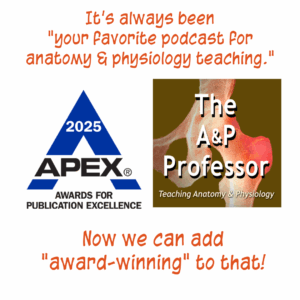
Stay Connected
The easiest way to keep up with new episodes is, um, wherever you already listen to audio!
Click here to be notified by email when new episodes become available (make sure The A&P Professor option is checked).
Call in
Record your question or share an idea and I may use it in a future podcast!
Toll-free: 1·833·LION·DEN (1·833·546·6336)
Email: podcast@theAPprofessor.org
Share

Kevin's bestselling book!
Available in paperback
Download a digital copy
Please share with your colleagues!
Tools & Resources
TAPP Science & Education Updates (free)
TextExpander (paste snippets)
Krisp Free Noise-Cancelling App
Snagit & Camtasia (media tools)
Rev.com ($10 off transcriptions, captions)
The A&P Professor Logo Items
(Compensation may be received)
🏅 NOTE: TAPP ed badges and certificates can be claimed until the end of 2025. After that, they remain valid, but no additional credentials can be claimed. This results from the free tier of Canvas Credentials shutting down (and lowest paid tier is far, far away from a cost-effective rate for our level of usage). For more information, visit TAPP ed at theAPprofessor.org/education

